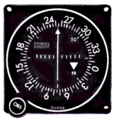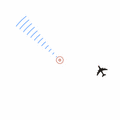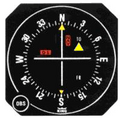VHF omnidirectional range facts for kids
VOR, which stands for VHF omnidirectional radio range, is a special radio navigation system. It helps aircraft (like airplanes) find their way and stay on the right path. It does this by picking up radio signals from a network of radio beacons on the ground.
VOR uses radio frequencies in the very high frequency (VHF) range, from 108 to 117.95 MHz. It was first created in the USA in 1937. Today, VOR is the main system used for air navigation all over the world. Both large commercial airplanes and smaller private planes use it. There are about 3,000 VOR stations around the globe.
How VOR Stations Work
A VOR station sends out a special VHF radio signal. This signal has three parts:
- An identifier: This is a code in Morse Code that tells pilots which station it is.
- Voice information: Sometimes, the station will broadcast important messages or weather updates.
- A navigation signal: This is the most important part! It helps the airplane's equipment figure out its magnetic direction from the station.
In places where the Earth's magnetic field is tricky, VOR stations are set up to point towards True North instead of magnetic north.
Finding Your Way with Radials
The direction from a VOR station is called a "radial." Think of it like spokes on a bicycle wheel, with the VOR station at the center. Each radial is a specific line of position.
To find an airplane's exact location, pilots can use two radials from two different VOR stations. Where these two radials cross, that's where the airplane is! VOR signals can usually reach about 200 miles.
Images for kids
-
VORTAC located on Upper Table Rock in Jackson County, Oregon
See also
 In Spanish: Radiofaro omnidireccional VHF para niños
In Spanish: Radiofaro omnidireccional VHF para niños










